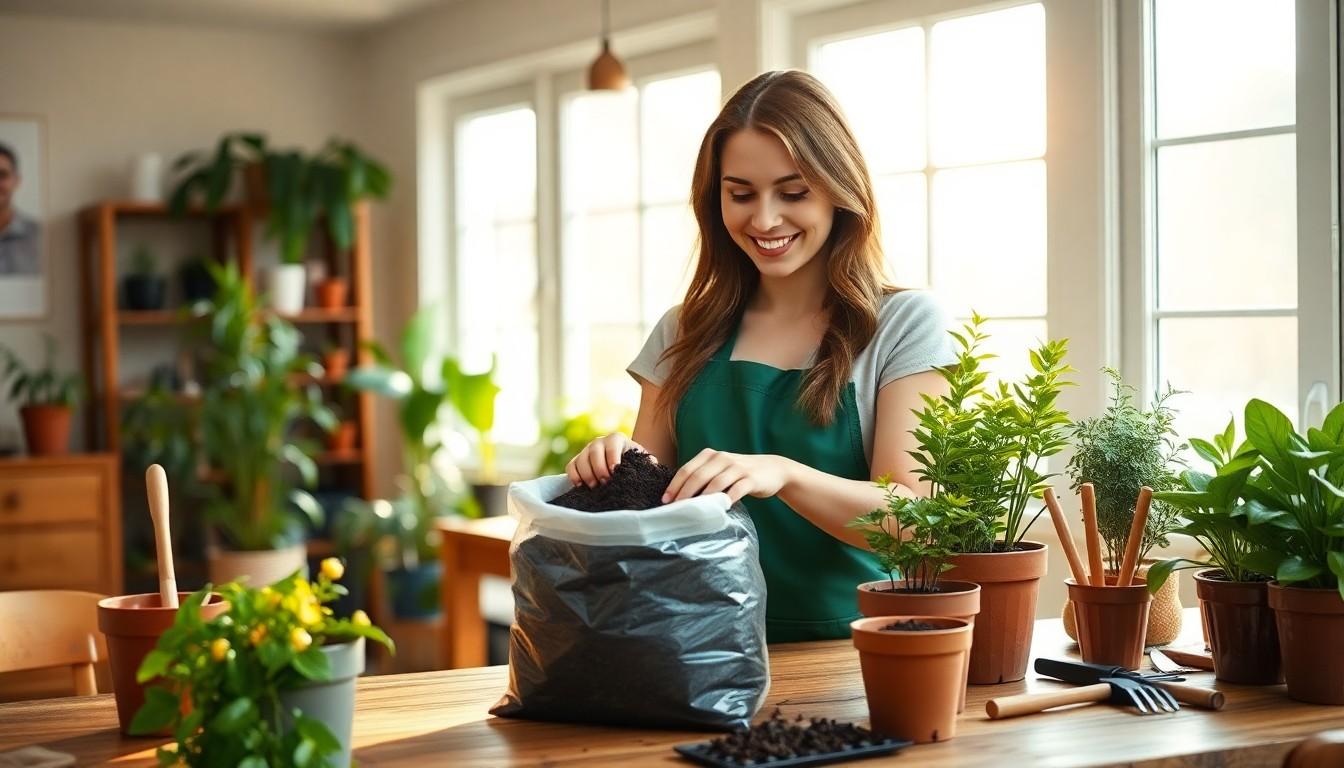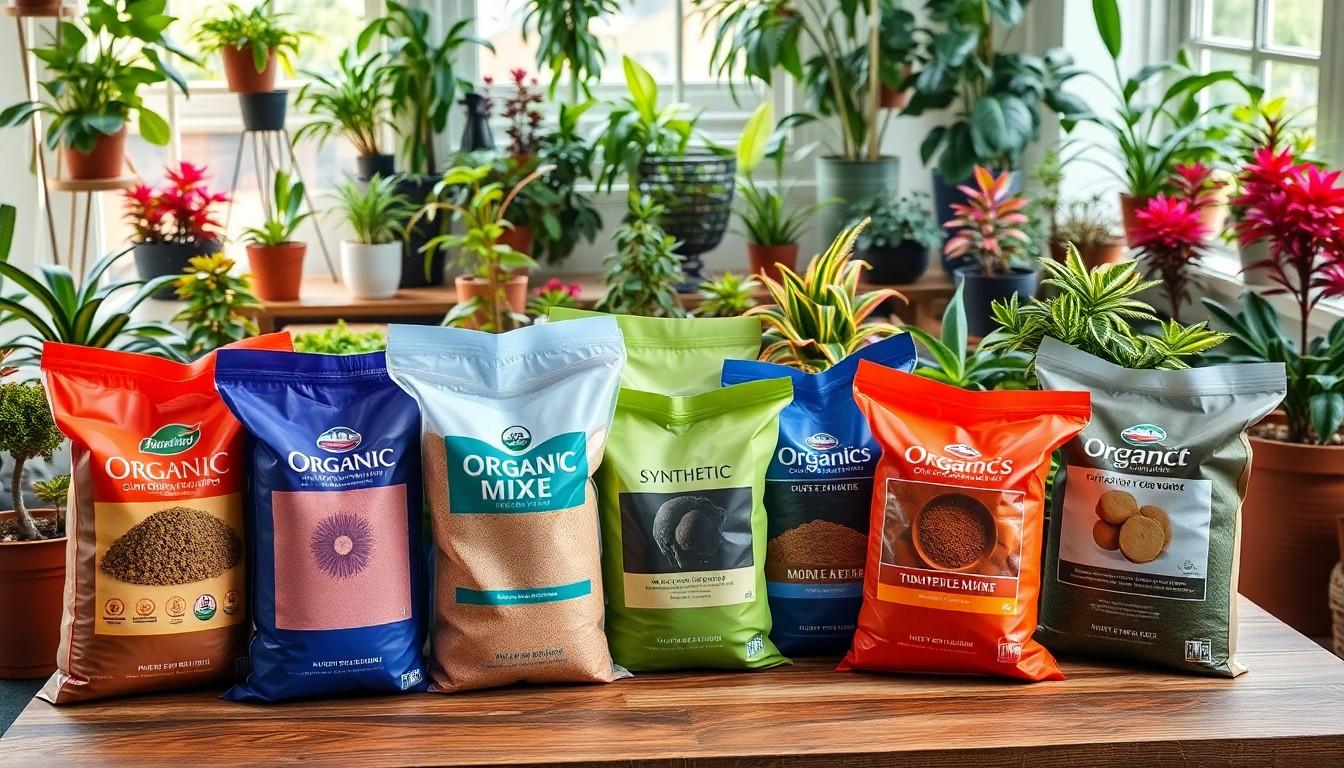The Best Fluffy Pancakes recipe you will fall in love with. Full of tips and tricks to help you make the best pancakes.

Potting Mix for Indoor Plants: Unlock the Secret to Thriving Greenery at Home
Indoor plants can transform any space from drab to fab, but there’s one secret ingredient that can make or break their success: potting mix. It’s like the cozy blanket that keeps your plants warm and happy, ensuring they thrive while you sip your coffee and pretend to be a plant parent. Choosing the right mix isn’t just about aesthetics; it’s about giving those leafy companions the nutrients and drainage they need to flourish.
Imagine your plants lounging in a luxurious blend of soil, nutrients, and moisture-retaining goodies. With the right potting mix, they’ll be the envy of every other houseplant on the block. So, let’s dig into the world of potting mixes and uncover what makes the perfect recipe for indoor plant success. Your green friends will thank you, and who knows? You might just become the ultimate indoor gardener.
Importance Of Potting Mix For Indoor Plants
Potting mix serves as the foundation for healthy indoor plants. It supplies essential nutrients that promote growth, ensuring plants receive the right balance of elements for optimal health. Quality potting mixes contain organic matter, which improves soil structure and enhances moisture retention.
Drainage proves crucial in any potting mix. Excess water can lead to root rot, making well-draining mixes vital for plant survival. Components such as perlite and vermiculite improve aeration, allowing roots to breathe and preventing waterlogged conditions.
The right pH level also impacts plant health. Most indoor plants thrive in a slightly acidic to neutral range (pH 6.0 to 7.0). Using potting mixes designed for specific plant types ensures the correct pH balance, promoting nutrient uptake and preventing deficiencies.
Microorganisms within the potting mix contribute to a flourishing ecosystem. Beneficial bacteria and fungi break down organic matter, releasing nutrients that plants can absorb. This symbiotic relationship enhances the overall health of the plant.
Choosing the appropriate potting mix directly affects growth rates and resilience. For instance, a cactus mix supports succulents by increasing drainage, while a mix high in organic material benefits tropical plants that enjoy moisture. Different plants require tailored mixes to thrive in indoor environments.
Updating potting mix periodically helps maintain nutrient levels. Over time, soil can become compacted or depleted, reducing its effectiveness. Replenishing the potting mix every 1-2 years keeps plants healthy and encourages new growth.
Investing time in selecting the right potting mix reveals significant rewards for indoor gardening efforts. With the correct mix, plants flourish and enhance indoor spaces, creating a vibrant living environment.
Types Of Potting Mix Available

Various types of potting mixes cater to specific needs of indoor plants. Understanding these types ensures optimal growth and health for a diverse range of plants.
Organic Potting Mix
Organic potting mix consists of natural materials such as peat moss, compost, and coconut coir. These components foster an ideal environment for plants, promoting beneficial microorganisms. Retaining moisture is a key feature, supporting consistent hydration. Additionally, organic mixes often provide slower nutrient release, ensuring a steady supply for plants over time. Indoor gardeners frequently choose organic options for their environmentally friendly attributes. For instance, mixes rich in compost support soil structure and enhance nutrient availability for plant roots.
Synthetic Potting Mix
Synthetic potting mix contains man-made materials tailored for specific plant requirements. Often, ingredients like perlite and vermiculite appear in these mixes to improve drainage and aeration. These mixes offer a lightweight alternative, making them suitable for larger plants. Many synthetic options also include controlled-release fertilizers that supply essential nutrients gradually. Users appreciate the predictability and consistency, as these mixes eliminate the variability associated with organic materials. For example, mixes designed for succulents and cacti feature formulations that prevent overwatering, addressing the unique needs of these plants.
Key Ingredients In Potting Mix
Quality potting mix comprises several critical ingredients that contribute to the health of indoor plants. Understanding these components helps in selecting the most suitable mix for specific plants.
Soil Components
Common soil components include peat moss, compost, and soil. Peat moss enhances aeration and moisture retention while providing an acidic environment suitable for many houseplants. Compost enriches soil with organic matter and vital nutrients, fostering a thriving ecosystem. Additionally, mineral soil supplies essential minerals like potassium and phosphorous, ensuring that plants receive a balanced diet. Choosing an appropriate mix can significantly impact plant growth and vitality.
Moisture Retention Agents
Moisture retention agents play a pivotal role in maintaining adequate moisture levels. Perlite promotes drainage due to its porous nature, preventing soil compaction and allowing roots to breathe. Vermiculite further supports moisture retention by absorbing water and releasing it gradually. Coconut coir also serves as an excellent moisture-retaining agent, capturing water while providing a lightweight structure. Incorporating these agents into potting mixes ensures that indoor plants receive consistent hydration without the risk of overwatering.
How To Choose The Right Potting Mix
Choosing the right potting mix involves evaluating specific factors to ensure plants thrive in indoor environments.
Factors To Consider
Consider drainage characteristics first. Good drainage prevents root rot, which is crucial for plant health. Evaluate moisture retention capabilities next. High moisture retention maintains hydration without over-saturation. Check pH levels for optimal nutrient absorption, targeting a range of 6.0 to 7.0. Look at organic versus synthetic options, as organic mixes promote beneficial microorganisms while synthetic mixes enhance aeration. Assess the intended use, as some plants thrive in lightweight mixes, while others prefer heavier substrates. Finally, review the ingredients, ensuring the presence of quality components like peat moss, compost, and mineral soil.
Plant-Specific Recommendations
Focus on the specific needs of plants when selecting a potting mix. For succulents and cacti, opt for a well-draining mix containing sand or perlite. Tropical plants benefit from moisture-retaining mixes rich in peat moss and compost. Ferns thrive in mixes that offer humidity retention, with added coconut coir for hydration. For orchids, use a specialized bark-based mix for ventilation and drainage. Herbs prefer potting mixes that balance moisture retention with drainage, combining components like compost and perlite. Always match the mix to the plant type for optimal growth and resilience.
Tips For Using Potting Mix Effectively
Choosing the right potting mix significantly impacts plant health. Select a mix tailored to the specific needs of indoor plants, such as moisture retention for tropical species or well-draining options for succulents and cacti.
When repotting, use fresh potting mix. Fresh mixes provide essential nutrients and beneficial microorganisms that contribute to vigorous growth. Stir the mix well before use to aerate it, ensuring even distribution of ingredients for optimal performance.
Check the pH level regularly. Maintaining a pH level between 6.0 and 7.0 promotes healthy roots and nutrient absorption. Some potting mixes come with pH information, making it easier to monitor and adjust.
Watering practices also play a critical role. Under-watering leads to stress, while over-watering can cause root rot. Test the top inch of the soil before watering to determine if moisture levels are adequate.
Fertilization complements potting mix. Consider using slow-release fertilizers to supply nutrients over time. Plant types may require specific fertilizer formulations, so research the best options for each plant group.
Inspect the drainage holes in pots to prevent waterlogging. Proper drainage ensures that excess water escapes, reducing the risk of root problems. If drainage holes are clogged, clear them to maintain healthy plants.
Lastly, replace potting mix every one to two years. Replenishing helps sustain nutrient levels and encourages new growth. Fresh mix revitalizes plants, promoting a thriving indoor garden.
Conclusion
Choosing the right potting mix is crucial for the health and vitality of indoor plants. A well-balanced mix not only supports growth but also ensures proper drainage and moisture retention. By understanding the specific needs of different plant types and selecting suitable ingredients, indoor gardeners can create an environment where their plants thrive.
Regular maintenance and monitoring of pH levels will further enhance plant health. With the right potting mix and care, indoor gardening can transform living spaces into vibrant green sanctuaries, bringing joy and beauty to any home.
